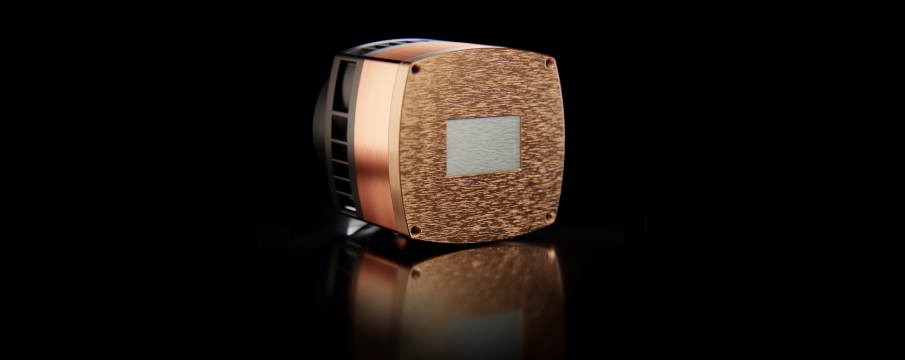
New X-Ray Cameras by XIMEA based on sCMOS
One of the benefits that sCMOS and CMOS sensors offer compared to the CCDs is the speed which is harnessed fully through the use of USB3, PCIe or Thunderbolt.
MUNSTER, Germany (PRWEB)
May 10, 2021
Last year marked another step in the slow discontinuation of CCD sensors. The biggest impact had the announcement of End of Life status for large format KAI sensors from ON Semiconductor (originally from Kodak and later Truesense) like the 11 Mpix KAI-11002, 16 Mpix KAI-16000 or KAI-16070 and 29 Mpix KAI-29052. XIMEA was utilizing these sensors among others in the family of compact X-ray cameras called xiRAY.
To offer equivalent or even better substitutes, the XIMEA team started working on several replacement models. These cameras include the latest generation of scientific CMOS sensors for increased performance over CCDs in many categories. Fiber optic tapers and faceplates are bonded to these sensors to enable light transmission from the coupled scintillators and phosphors to the sensors in the camera.
One important factor for choosing the right sensor is physical size complemented by high speed but then integrated into a small package. Applications such as x-ray computed tomography (CT) will greatly benefit from small size, high speed with large field of view, as will many non-destructive testing (NDT) applications.
This process started with the arrival of the most interesting scientific CMOS (sCMOS) sensors from Gpixel, in their GSENSE family.
The XIMEA engineers chose to start with the models based on GSENSE5130, GSENSE6060 and GMAX4651, due to their speed, high resolution, and large physical size plus scientific imaging attributes.
One of the primary benefits that sCMOS and CMOS sensors hold over their CCD counterparts is speed, which is harnessed using fast interfaces such as USB3, PCIe or Thunderbolt.
High dynamic range, crystal clear 16 bit images are provided from these sensors thanks to the combined high and low gain readout.
Image output can be adjusted utilizing various imaging modes provided by the camera software to optimize for single pixel full well capacity and noise to maximize SNR.
Long exposures are enabled by cooling the sensors with Peltier coolers to again match or exceed the capability of CCD based cameras.
XIMEA constantly modifies existing models to better accommodate different applications and customers. Available options can include customizing the size or shape of the fiber optic faceplate or taper, utilizing different materials at the front of the camera for protection from high energy photons or particles (such as the tungsten copper alloy used in the example picture), or just utilizing the myriad ways XIMEA has already developed to connect via the interfaces already in use (ribbon cables, shielded cables, and fiber optics).
To summarize, the models planned for introduction into XIMEA portfolio of X-ray cameras are developed with the following parameters:
-
15 Mpix, Gpixel GSENSE5130, X-ray camera, FOV 21.5 x 12.6 mm, 4.25 μm pixel, GadOx:Eu 10 μm thick, 17 Fps with USB3 - 15 Mpix, Gpixel GSENSE5130, X-ray camera, FOV 43 x 25.2 mm, 4.25 μm pixel, with Taper and GadOx:Eu 10 μm thick, 17 Fps with USB3
- 37.7 Mpix, Gpixel GSENSE6060, X-ray camera, FOV 61.4 x 61.4 mm, 10 μm pixel, GadOx:Eu, 46 Fps with PCIe and Air or Water cooling
- 51 Mpix, Gpixel GMAX4651, X-ray camera, FOV 38.75 x 27.75 mm, 4.6 μm pixel, GadOx:Eu 22 μm thick, 30 Fps with PCIe
- 51 Mpix, Gpixel GMAX4651, X-ray camera, FOV 70.5 x 50.4 mm, 8.5 μm pixel, with Taper GadOx:Eu 35 μm thick, 30 Fps with PCIe
High speed and resolution, large sensors and pixels, low light sensitivity and 16 bit image quality, plus overall small size make these cameras ideal for micro CT and many other scientific x-ray applications.
With a plethora of variations, it is important to understand the exact requirements of the specific customer and setup of the application. Please contact us and our knowledgeable sales team to help configure the right product for your application.
About XIMEA
For more than 20 years XIMEA has developed, manufactured and sold standard and OEM cameras for machine vision applications in motion control, assembly, robotics, industrial inspection and security, as well as scientific grade cameras for life science and microscopy. The main distinction is based on flexibility of development and production processes, and extremely robust way the cameras are built while still providing highest speed and power. Drawing on more than two decades of experience in the industry, XIMEA offer consists of state-of-the-art cameras with FireWire, USB 2.0, USB 3.0 and smart cameras with embedded PC and GigE interface.
Learn more about XIMEA at http://www.ximea.com
Share article on social media or email:

